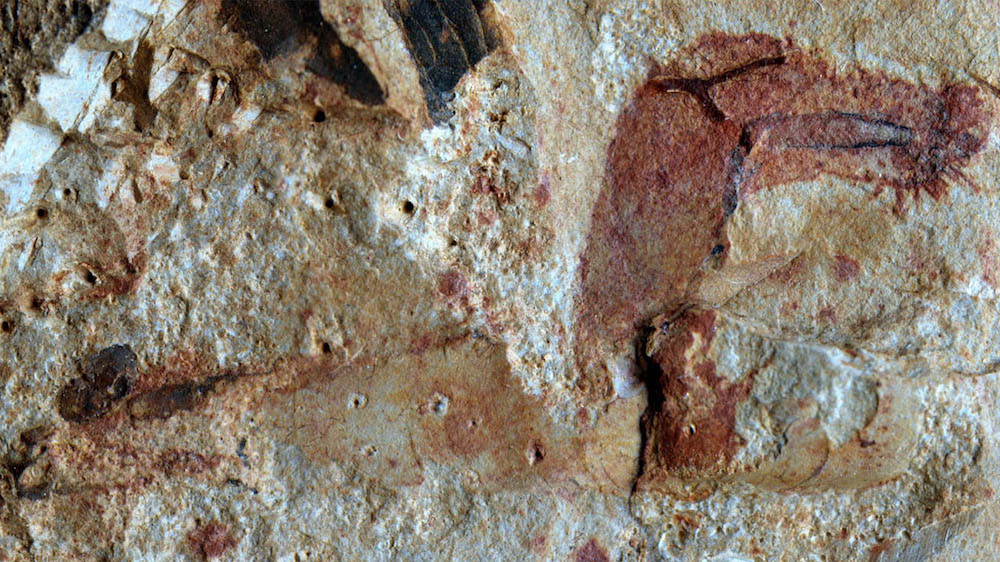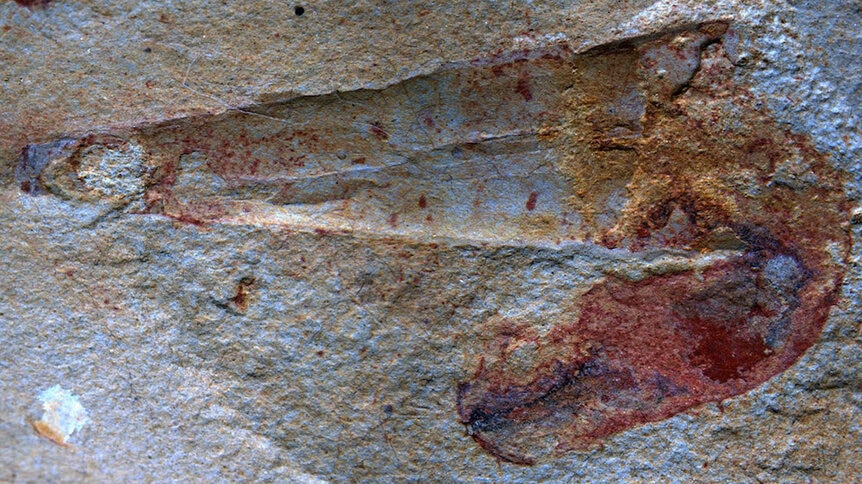Create a free profile to get unlimited access to exclusive videos, sweepstakes, and more!
Phallic prehistoric worms were hermiting before hermit crabs ever hermited
Prehistoric priapulans, aka "penis worms," hung out in empty shells long before hermit crabs existed.

Ever get freaked out by something that looks like a disembodied — ahem — at the beach?
Those “penis worms” that sometimes wash up on the shore are actually a type of priapulan. Named for Priapus, the particularly well-endowed Greek god of fertility, the extant ones known as priapulids appear like a certain part of the male anatomy or writhing intestines, depending on how you see them (if they emerge from their burrows). These things have been around for 500 million years. Some found an unlikely way to avoid getting eaten.
Priapulans terrorized early Cambrian seas with expandable mouths full of fangs that must have been pure nightmare fuel. However, as the Cambrian explosion of new life-forms brought more predators onto the scene, the worms needed more defenses. What they did to protect themselves surprised paleontologists Xiguang Zhang of Yunnan University in China, who led a study recently published in Current Biology, and coauthor Martin Smith of Durham University. They took up empty shells long before hermit crabs did.
"Our discovery is the only known example exhibiting priapulan worms living within a hyolith shell," Zhang told SYFY WIRE. "We do not know whether their descendants would have dropped the hermit lifestyle or whether they went extinct."
Not all priapulans hunted other creatures. There were also scavenging species and those fed on nutrients and microorganisms in the mud, but whether or not they had teeth for tearing flesh, larger predators weren’t afraid to snap them up. Some burrowed to hide from predators like extant species do. Others decided they needed body armor with so many hungry jaws around. They managed to wriggle into the abandoned shells of dead hyotliths, Cambrian invertebrates that were some of the first shelled creatures to appear on the fossil record.
“It seems that the Cambrian was characterized by a feedback loop with the invention of new modes of life,” Smith also told SYFY WIRE. “This created new opportunities for organisms to diversify by finding ways of outrunning, outburrowing, or armoring themselves against predators.”
The soft bodies of these prehistoric invertebrates would have decomposed easily and just left behind the shell. Zhang and his team found that under the right conditions, not only did the shell fossilize, but also soft tissues of the priapulans that once lived in them. These fossils (above and top) are only some of the exceptionally preserved remnants of Cambrian life from the Guanshan fossil deposits of China. Whatever was behind this remains unknown, but it revealed that priapulans took up empty shells hundreds of millions of years before hermit crabs.
“The chemistry of the clay minerals in which the fossils were smothered was probably important; so was rapid burial,” said Smith. “This sort of preservation became rare after the Cambrian period. Maybe there was something in the water soft tissues at that particular time.”
Exipriampulus is the fossilized priapulan species that was found hanging out inside hyolith shells. In each of the four fossils that were unearthed, the worms are always in the same position, as if they had made sure to get as much of themselves in the shell as possible. The only explanation that made sense for this was that they relied on the shells to protect themselves from the onslaught of predators that arose during the Cambrian explosion.
So if hermiting was such a success for pripaulans, why did those species go extinct?
"There is no convincing evidence that he priapulan lineage with hermit behaviors resorted to burrowing in sediments, despite this being a reasonable hypothesis," said Zhang.
They might not look majestic like dinosaurs or fearsome like a megalodon, but pripaulans are far older than both, even with their unfortunate visual association. Think of that if you see one wash up somewhere.



























